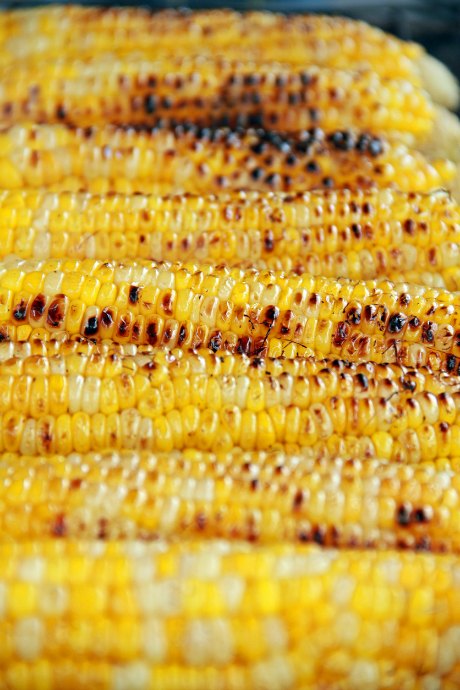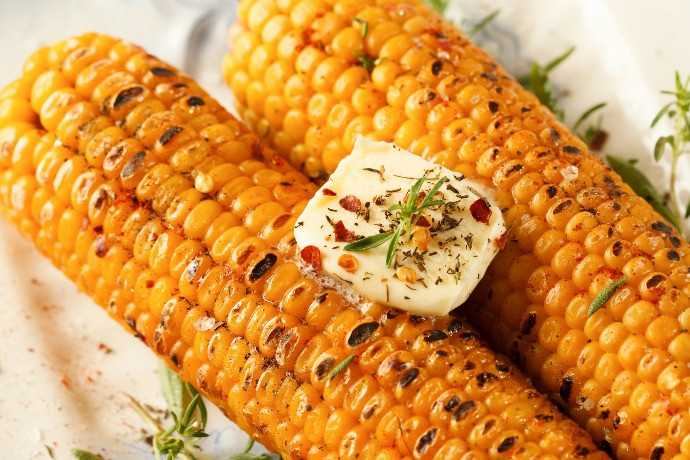Eat Seasonally in August: Fresh Corn on the Cob
Posted by Julie on Aug 1st 2016
If you haven't had fresh corn on the cob yet this summer, you still have plenty of time. Corn has to be one of our favorite seasonal vegetables simply because the season is so long. You can get fresh corn on the cob from June through October. Unlike other summer vegetables like sugar snap peas and zucchini, it's more likely you'll get corn at the grocery store or a farmer's market than from your own backyard.
Check out all the ways to cook fresh corn on the cob, from stovetop to grill, and even in the microwave. Plus, because sweet corn has such a mild flavor, it's perfect for seasoning with all sorts of compound butters.
How to Cook Fresh Corn on the Cob
Method 1: On the Stove
Boiling is the standard way of cooking corn on the cob on the stove, and it works quite well. However, we found a couple ways to elevate this classic method that are worth trying.
First, try adding a cup of milk and a stick of butter to your stockpot of boiling water. Milk gives your corn on the cob more flavor depth, even before you slather it in compound butter. You may even opt to go without adding butter to corn cooked this way.
Another option is to steam the corn in a large sauté pan. This method from Love & Lemons is an easy alternative to microwaving fresh corn on the cob when you only want to cook a few ears.
Method 2: In the Microwave
This method may seem like a strange option for preparing a fresh seasonal vegetable, but it has its place. Your microwave is great for cooking a few ears of fresh corn on the cob for a recipe or a quick weeknight side. Just microwave in the husk for a few minutes, and shuck right before serving or shearing the kernels from the cob.
But first, pay attention to these smart tips from commenters on The Kitchn. Cut off the stalk end of the ear before microwaving. After cooking, hold the tassel end with a potholder and shake the ear of corn out of the husk, leaving the silk behind. If you have a gas stove, use metal tongs to hold the cooked ear over a lit burner to char the kernels.

Method 3: On the Grill
On Serious Eats, they've done a great job breaking down the pros and cons of different ways to grill fresh corn on the cob. Grilling in the husk means minimal prep work, and the silks peel off easily after cooking. If you grill in foil or uncovered, you'll need to shuck and clean the corn first, just like when cooking on the stove.
Some recipes call for buttering the corn before grilling, whether in foil or in the husk. Serious Eats isn't sure this step is worth the trouble. They advise waiting to butter and season your corn until after it's cooked.
Grilling uncovered corn will char the kernels, but the corn isn't as juicy as when grilled in the husk or in foil. If you're determined to get those grill marks, we suggest cooking it while covered. Then put it on the grill uncovered for a minute or two before serving.
How to Season Fresh Corn on the Cob
Seasoning corn on the cob can be simple with butter and salt, or you can try compound butters. Mix softened butter with various spices and seasonings, and slather it on corn. Get creative with your favorites, or try one of these recipes:
Chili lime honey butter from Iowa Girl Eats -- butter, lime juice, honey, chili powder and cayenne pepper
Blue cheese and chive compound butter on Chowhound -- butter, blue cheese, fresh chives, salt and pepper (also recommended on steak)
Horseradish compound butter on Food52 -- butter, minced garlic, lemon zest, fresh horseradish, fresh Italian parsley, salt and pepper
Avocado compound butter from Alton Brown -- butter, avocado, lemon juice, minced garlic, fresh cilantro, cumin, salt and pepper
Tools for Cooking Fresh Corn on the Cob
Now that you know all the different ways to cook corn, let's talk about the tools you will need.
For cooking on the stove, a large stockpot is essential for boiling. We have stockpots in a variety of sizes to fit any budget. If you'd like to try steaming, we recommend at least a six quart or 12-inch diameter sauté pan. This size should accommodate at least a few ears of corn. Check out our selection of sauté pans. For grilling, don't miss the All-Clad Barbecue Tool Set. Perfect for grilling expertly and in style.

